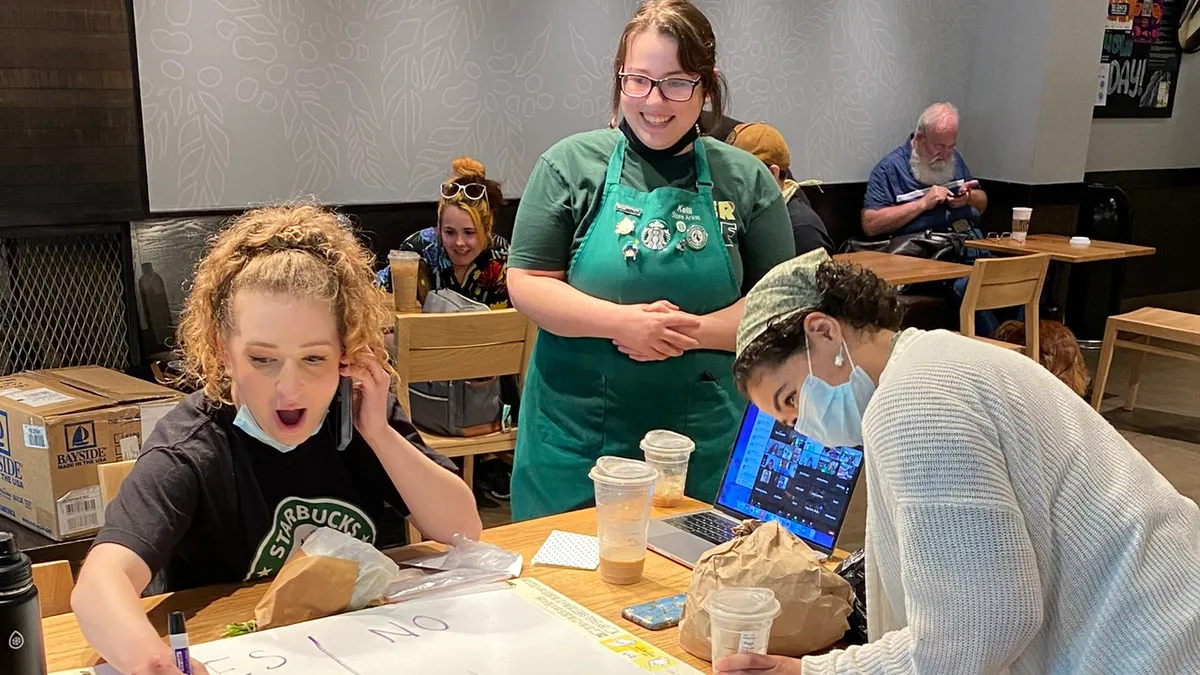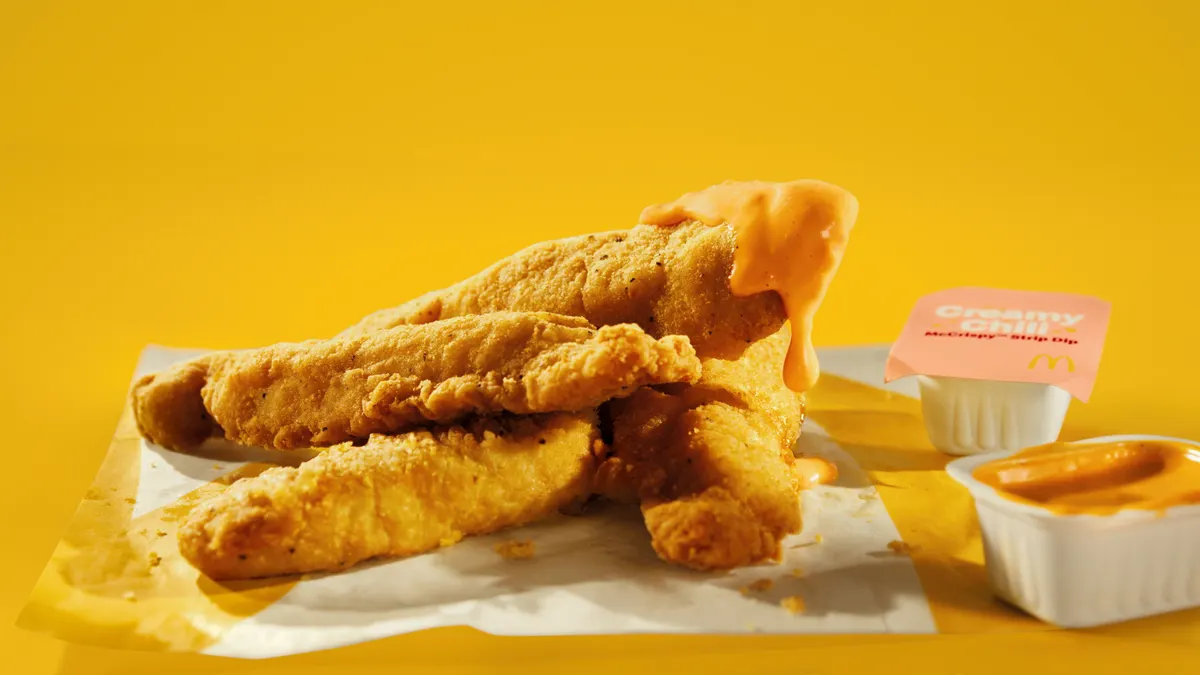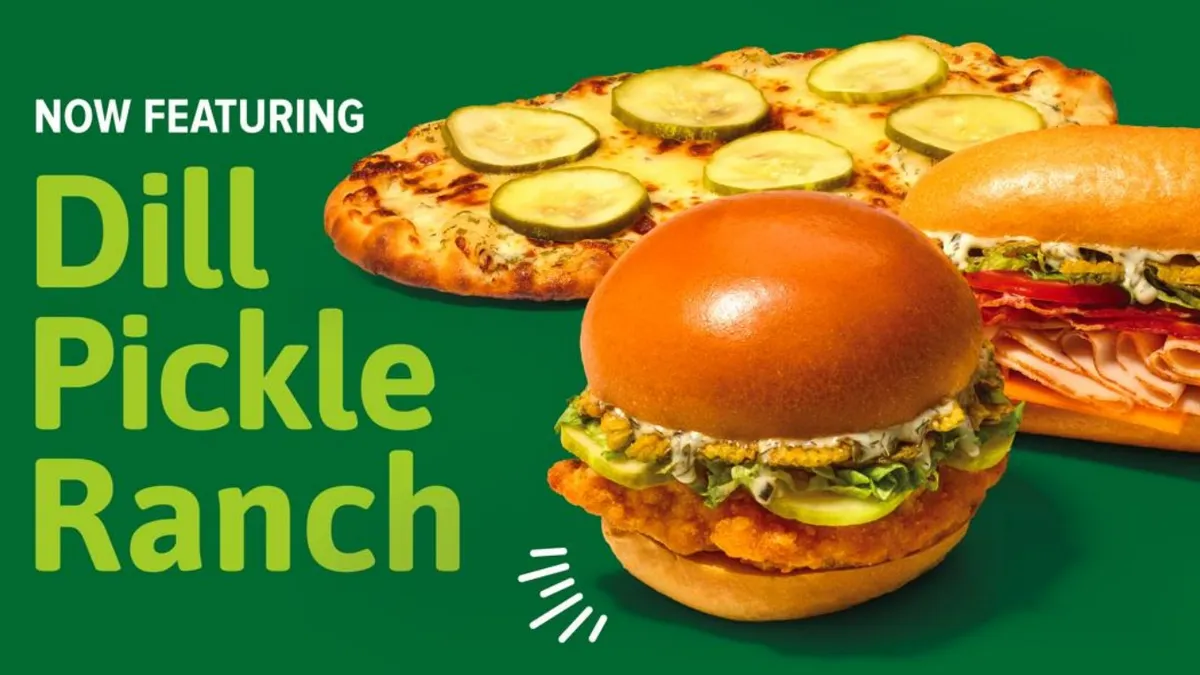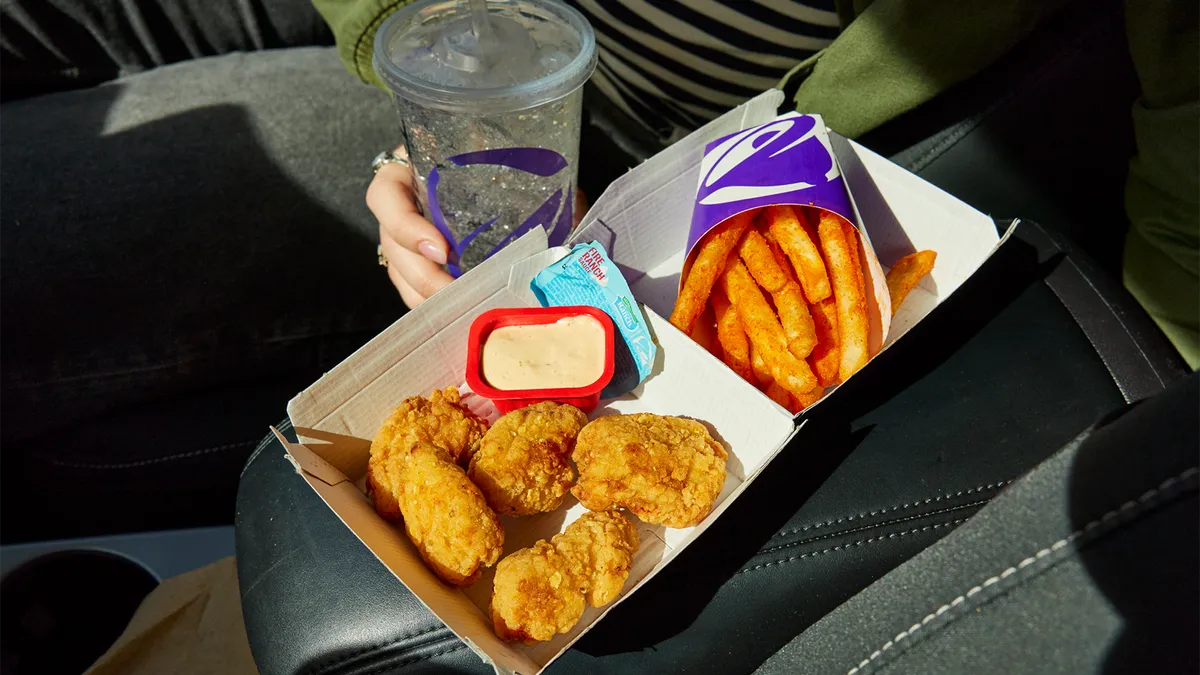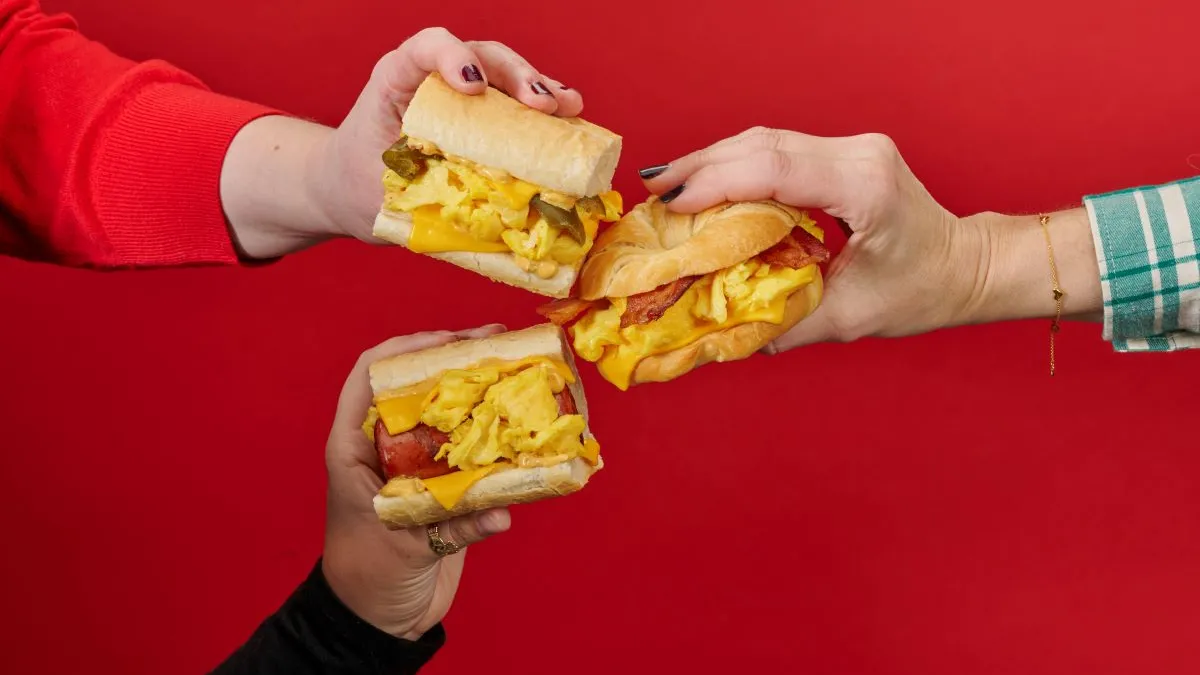First Watch’s spring menu, which includes Wild Berry Lavender French Toast and SoCal Breakfast Hash, took over a year to develop — and that’s by design. The breakfast chain’s culinary, marketing and supply chain teams are given 18 months to create, develop and procure ingredients for its seasonal menus.
The process includes visiting independent restaurants to gauge flavor trends. First Watch then needs to determine the best time to buy specific ingredients and test how they perform with customers. The restaurant’s seasonal Jump Start menu typically contains five items, including three entrees and a juice, and allows the chain to dabble in new culinary trends.
“Our core menu virtually hasn’t changed because of how much we focus on evolving and pushing the limits on the seasonal menu,” Matt Eisenacher, First Watch’s chief brand officer, said. “Your core menu can just be what it is.”
Having a rotating menu can bring in new and existing customers, which could be key to helping the brand maintain traffic while egg prices continue to soar. While visits among breakfast-heavy chains have declined weekly from Jan. 6 to March 3, First Watch was one of two brands to see year-over-year growth, according to Placer.ai data.
“We know we have a very large percentage of our customers who want bacon and eggs and potatoes and toast,” Shane Schaibly, senior vice president of culinary strategy at First Watch, said. “Let them stay steady and be able to come to us and get something consistently. But for those who want a little bit of adventure … the LTO is where we play.”
Making seasonal items a reality
First Watch changes its five-item seasonal menu. This menu development cadence started under Schaibly, who joined the chain 11 years ago. At that time, First Watch was only just dipping its toes in the LTO space with a pumpkin pancake, which did well, Schaibly said.
If First Watch could create one seasonal offering per year, Schaibly thought why not create seasonal menus four times a year, and he “just went to work.”
The process starts on paper, where the culinary team envisions different dishes and writes them down. The team knows there will be an egg dish, a toast and a hash, as well as a special juice and a fifth item. The team will think about current cuisine trends, like popular Asian and Mexican flavors, and what has been successful in the past. Sometimes it will give an AI chatbot parameters to create a dish in a First Watch style.
“I don’t create in the clouds and just think of this crazy dreamy thing that would never be able to be executed,” Schaibly said. “I always have that lens on.”
The team collects 50 ideas, which are then presented to the CEO and the marketing and culinary teams, who then vote to knock the dishes down to 12. Those 12 are then the ones that the teams develop and test over three months.
Schaibly and his team work on creating and writing recipes, figuring out what products to use and planning out how to work with manufacturers. That way, all the restaurants have to do is concentrate on cooking the dishes, ensuring consistent presentation and providing hospitality to customers.
“I think because of that they’re getting handed something that is ready to go,” Schaibly said. “They don’t really have to think too much about it. They’re proud of the ingredients they’re serving. They’re proud of the way the dishes are presented.”

Finding the next big culinary trend
To gain a better understanding of what flavors are in vogue, Schaibly and Eisenacher will go on culinary tours, visiting upwards of 15 to 20 independent restaurants over three days in a particular city to see what is popular. Independents typically have a good pulse on new flavor trends compared to large-scale restaurants.
“We don’t go for the mainstream,” Eisenacher said.
A few years ago, the team went to Nashville, where they saw that 90% of the tables had cornbread on the menu. Cornbread felt ubiquitous, but First Watch had never added the baked good to its menu, even though First Watch bakes muffins and similar items every day. So, Schaibly created cornbread the First Watch way, which led to two successful cornbread dishes that “absolutely killed it,” Schaibly said.
“Our customers didn’t know they wanted it yet,” Schaibly said. “We’re not sitting back and waiting to be told what the trend is going to be. We’re willing to go seek it out.”
Sometimes these tours lead to dishes that the team isn’t sure customers are ready for, but that is why First Watch always tests menu items before launch.
“We have a good testing process where if it doesn’t work, that’s okay,” Eisenacher said. “That’s what allows us to take chances.”
First Watch took a risk with adding Parmesan Proscuitto as a recent LTO, Eisenacher said. The team wasn’t sure if customers would like it because prosciutto was more mainstream five or 10 years ago, but has dropped off menus and is considered an elevated protein. The team took a risk on the ingredient anyway, and it paid off.
“It’s been a crazy, crazy hit with our teams and our customers,” he said.
Supplying seasonal menus
Constant communication remains a key strategy for sourcing and menu development, said Lilah Taha-Rippett, First Watch’s senior vice president of supply chain. She and her team talk with Schaibly every day about operations, menu items and sourcing items to determine the best suppliers for LTOs, she said. The chain’s supply chain, culinary and marketing teams aren’t siloed like they can be at other restaurant companies.
“The thing that’s special about First Watch is there’s just the highest level of collaboration,” Eisenacher said. “I think that’s how you do something to this magnitude and with this much complexity.”
The 18-month timeframe is the perfect amount of time for the supply chain team to watch the markets,understand what is going on with a specific commodity and create an expectation around that commodity, Taha-Rippett said. In addition to preparing for the seasonal menus, the team also has to figure out how many more products it will need to accommodate the opening of new restaurants.
The testing pipeline allows the team to procure the right product in the right season to get the best price for a quality product, she added. It also allows First Watch to get a better sense of customer reactions during those tests, Schaibly said, adding that you don’t want to test a watermelon dish out of season when the flavor isn’t optimal, for example.
“We're able to be much more methodical and in our approach, and much more strategic about how we want to buy, when we want to buy, and where we want to buy from,” Taha-Rippett said.
This strategy proved important when the chain ran a Brooklyn Sandwich with brisket in it. The teams watched the markets to figure out where the bottom was to get the best price to buy, Schaibly said.
“Because we're a year ahead … we give Layla and her team that cushion in that time to buy when the time is right,” Schaibly said.
Incorporating LTOs into the core menu
In addition to its rotating LTO menus, First Watch will test an expanded line of beverages and has already trialed new menu items that delivered positive early results, CEO Chris Tomasso said during the company’s Q4 2024 earnings call. Other tweaks included increasing meat and potato portions in some of its top-selling items and replacing honeydew with “more premium fruit,” like strawberries, pineapple and blueberries in its fruit bowls.
This is the first time in over five years that the chain has made any major changes to its core menu.
“Because we change that LTO menu every 10 weeks, we don’t really have to mess with the core very often,” Schaibly said. He added this strategy diverges from other brands’ approaches, which can include changing core menus more frequently to get rid of lower-mixing items or adding a successful LTO to its permanent roster.
“The ones that work year round, we will continue to go back to the banks and maybe put them in a second or even third LTO and see if they have that staying power,” Schaibly said. “If they do, that’s written up on the board. When core menu time comes around this is something we should definitely consider.”
One LTO that made it onto the core menu was the Purple Haze juice. The juice uses butterfly pea flower, lemon and a hint of lavender. The pea flower, which was already popular in independent restaurants, gives the drink a purple hue. Purple Haze ran for two years as an LTO and after that amount of time it made sense to just add it to the core menu.
“It didn’t lean too heavily on seasonal ingredients and it was something that was special,” Schaibly said.







